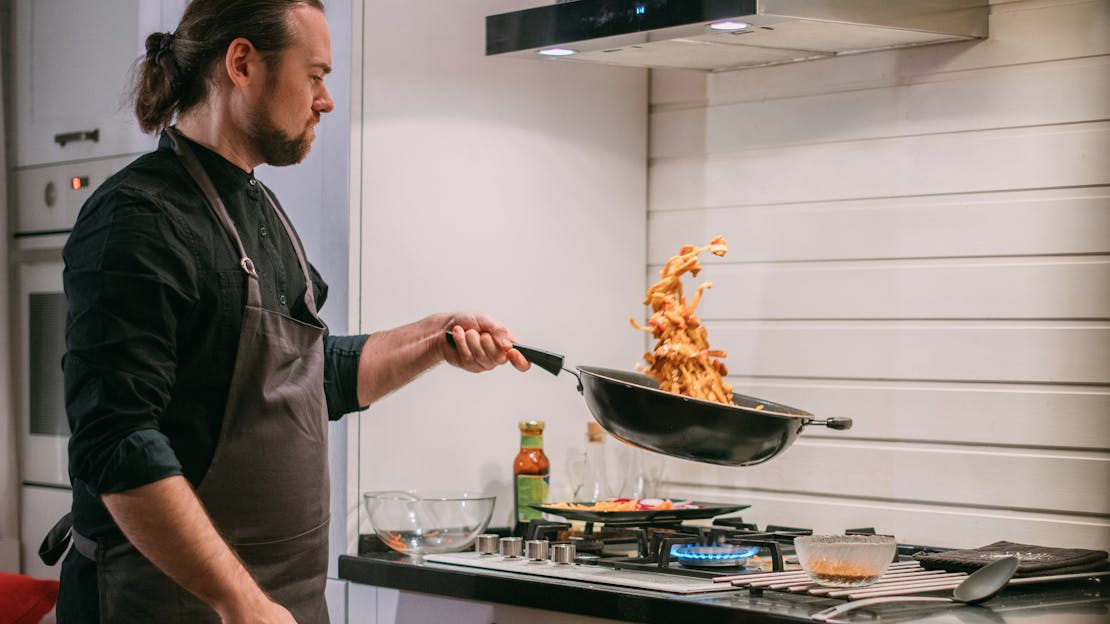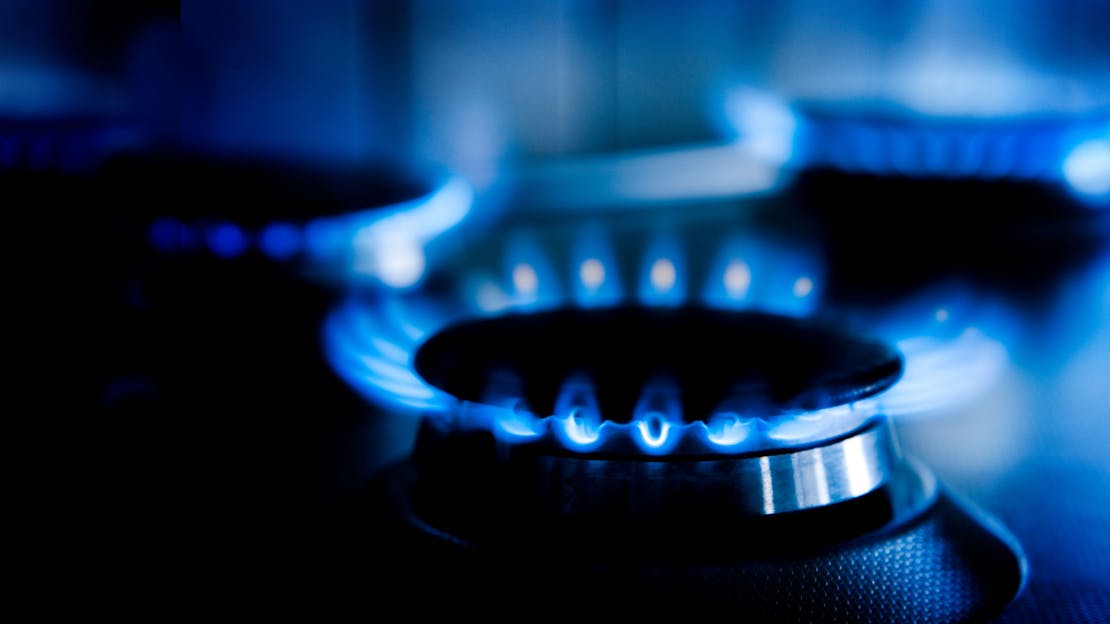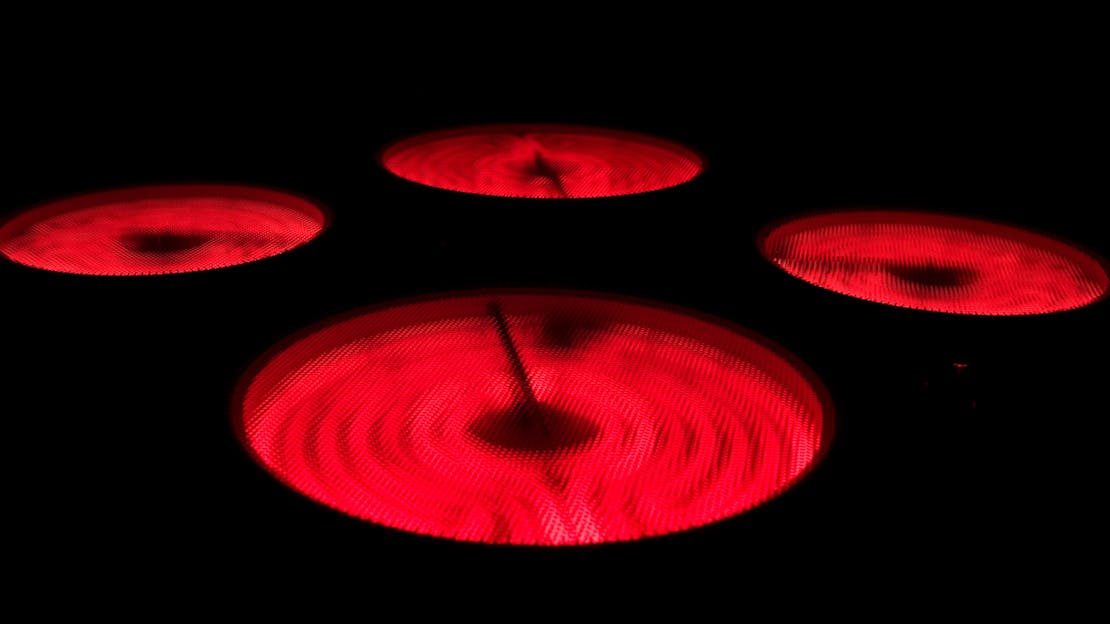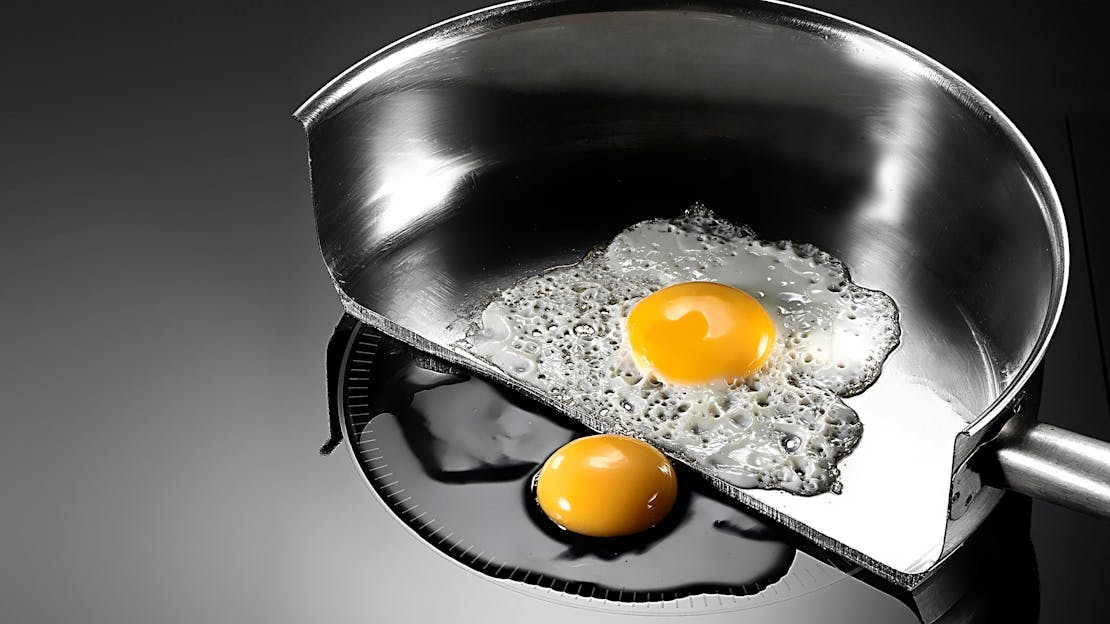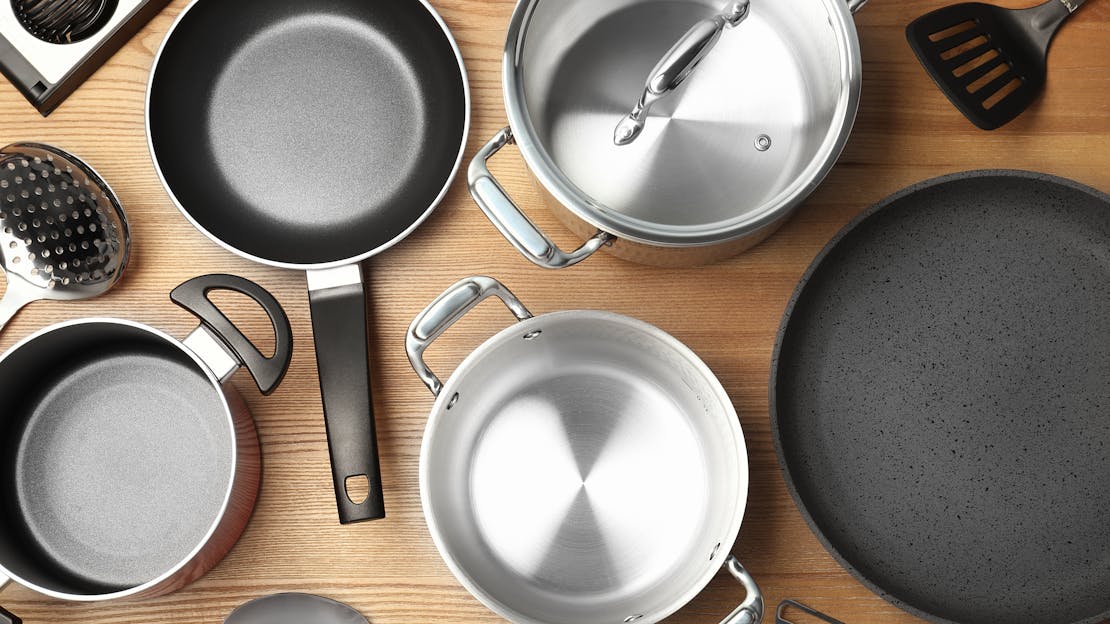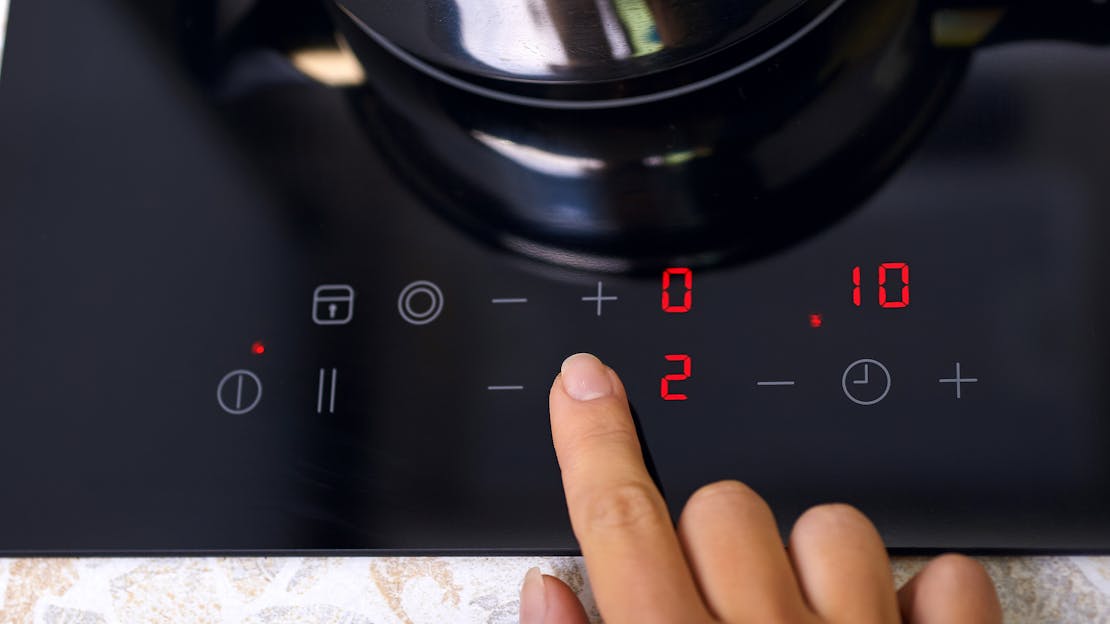
The Ultimate Guide to Induction Hobs
If you're considering upgrading your kitchen hob, you may find yourself mulling over the fascinating world of induction hobs. As one of the leading manufacturers of all types of hobs, we're here to help navigate you through this often bewildering terrain. Welcome to the Ultimate Induction Hob Buying Guide!
What is an Induction Hob?
An induction hob is a type of electric hob that uses magnetic fields to generate heat. Unlike traditional electric hobs, where electricity heats a plate that then heats your pot or pan, induction hobs heat the cookware directly. This unique method offers a whole range of benefits, including speed, efficiency, and precise control, making induction hobs increasingly popular in modern kitchens.
How Induction Cooking Works
The magic of induction cooking lies in electromagnetism. Beneath the hob's smooth, ceramic surface are tightly wound coils of wire. When you turn on the hob, electricity flows through these coils, creating a magnetic field. When you place a pan made of a magnetic material (like iron or stainless steel) on the hob, this magnetic field induces electric currents in the pan, producing heat.
The magic continues when you remove the pan - the energy flow stops, the heating stops. It means the hob itself doesn't get hot; instead, it's your pan that does the cooking. This is the essence of induction cooking - fast, responsive, and incredibly energy efficient.
What Pans Do You Need for Induction Hobs
Induction hobs require pans made from or layered with a magnetic material, like cast iron or some types of stainless steel. Unfortunately, copper, glass, and aluminium pans don't work with induction hobs unless they have a magnetic layer on the bottom.
To test whether your current pans will work, simply hold a magnet to the bottom. If it sticks, you're good to go! Otherwise, you'll need to consider investing in induction-compatible cookware.
Do Induction Hobs Go Red?
Unlike traditional electric or ceramic hobs, induction hobs do not glow red when they're hot. The hob itself doesn't heat up - it's the pan that gets hot due to the induced magnetic field. So, you don't get a visual indicator that an induction zone is hot. However, most induction hobs do feature heat indicators that tell you if the hob is still radiating residual heat from the pot or pan.
Do Induction Hobs Mark Easily?
Like any kitchen appliance, the longevity and appearance of your induction hob depend on how well you care for it. The surface of an induction hob is made from toughened glass, which is robust and designed for regular use. However, it can be scratched by abrasive cleaning materials or marked by pans with rough bases sliding across the surface.
Regular cleaning, using non-abrasive cleaners and soft cloths, can keep your induction hob looking pristine for years. Some users recommend using a silicone or glass stove top cover for added protection when the hob is not in use.
How to Install an Induction Hob
Installation of an induction hob should be carried out by a professional, as it involves working with electrical wiring. It's essential to make sure your kitchen's electrical supply can handle the load of the induction hob, which can be considerable for models with multiple cooking zones.
Remember, improper installation not only risks damaging the hob, but it also poses potential safety hazards and may void your warranty. Always hire a certified professional for installation.
How to Use an Induction Hob
Mastering the use of an induction hob can enhance your culinary skills, transforming your cooking experience into a more efficient and enjoyable one. Here's a more detailed guide on how to use an induction hob.
Step 1: Select the Right Cookware
The first step to using an induction hob is to make sure you're using compatible cookware. Your pots and pans should be made of a magnetic material such as iron or certain types of stainless steel. You can test your current cookware by simply sticking a magnet to the bottom. If it sticks, the cookware is compatible. If it doesn't, you may need to consider buying induction-ready cookware.
Step 2: Position Your Pan
Place your chosen pan on the induction hob, ensuring it is centred on the cooking zone. One of the unique features of induction hobs is that the entire pan bottom needs to make contact with the hob for heat to be transferred effectively.
Step 3: Adjust the Settings
Once your pan is correctly positioned, turn on the hob by pressing the power button. Most induction hobs feature touch-sensitive controls for ease of use. After it's switched on, select the cooking zone you're using (if it doesn't automatically select the one where you've placed the pan) and set your desired heat level.
Induction hobs provide a range of power settings, from a gentle simmer to a rapid boil. With their immediate responsiveness, adjusting the temperature is as easy as pressing a button. You can raise the heat to bring a pot of water to a boil quickly, then instantly lower it to a gentle simmer.
Step 4: Get Cooking
You're now ready to start cooking. You'll notice how quickly your pan heats up - that's one of the marvels of induction cooking. Remember, the hob itself stays relatively cool, as the heat is generated directly in the pan.
Step 5: Turning Off
Once you've finished cooking, simply remove the pan and turn off the hob using the controls. Some models automatically turn off when a pan is removed from the cooking zone. Although the hob doesn't get hot, there may be some residual heat from the pan. Most induction hobs have heat indicator lights that let you know if the surface is still hot to touch.
Additional Tips
- Use the timer function if available: Many induction hobs come with built-in timers that can turn off the hob after a specified time, offering even more control over your cooking.
- Avoid sliding your cookware across the hob: Although the hob is made of toughened glass, sliding pots and pans around could potentially cause scratches.
- Clean regularly: To keep your hob looking and working its best, wipe it down after every use. Remember to wait until any residual heat has dissipated.
By following these simple steps and tips, you'll be able to harness the full power and convenience of your induction hob, making your time in the kitchen even more enjoyable.
How Much Energy Does Induction Cooking Use?
Induction cooking is known for its impressive energy efficiency. Because it uses a magnetic field to directly heat your cookware, less heat is lost compared to traditional electric or gas hobs, the pot. A recent study by the Department of Energy found that induction cooking was 84% efficient in its use of energy, compared to 74% for a smooth top electric hob and just 40% for a gas hob. Therefore, induction hobs can be a smart choice if you're looking to cut back on your energy consumption and potentially lower your energy bills.
What Are the Advantages of Induction Hobs?
1. Speed: Induction hobs heat up and cool down faster than any other type of hob. This means you can boil water or change cooking temperatures more rapidly, which can save you time in the kitchen.
2. Energy Efficiency: As mentioned above, induction hobs make better use of energy. This efficiency can lead to lower energy bills, making an induction hob a cost-effective choice in the long run.
3. Safety: Induction hobs are considered safer than gas or electric hobs. The hob surface remains relatively cool, reducing the risk of burns. Plus, many models come with child safety locks and automatic shut-off features for extra peace of mind.
4. Easy to Clean: With a flat, seamless surface, cleaning an induction hob is as simple as a quick wipe down. There are no burners or grates to disassemble and scrub.
What Are the Disadvantages of Induction Hobs?
1. Requires Compatible Cookware: As noted, induction hobs require pots and pans made from or layered with a magnetic material. If your current cookware is not compatible, you'll need to factor in the cost of new cookware.
2. Can Be Noisy: Some people find that induction hobs can be a bit noisy, particularly at high power levels. This noise comes from the cooling fan inside the hob, and from the vibration of the magnetic field against the pan, which can produce a humming or buzzing sound.
3. Power Supply Needs: Induction hobs require a significant amount of electrical power, and your home's power supply may need to be upgraded to handle this. This can increase the cost of installation.
Why Choose an Induction Hob Over a Ceramic Hob?
1. Speed and Efficiency: While both types of hobs have smooth, easy-to-clean surfaces, induction hobs are much faster and more energy-efficient than ceramic hobs.
2. Precise Control: Induction cooking offers very precise control over cooking temperatures, making it a great choice for recipes that require careful heat management.
3. Safety Features: Induction hobs offer several safety advantages, such as the hob surface remaining cool, and the hob automatically turning off when a pan is removed.
Why Choose an Induction Hob Over a Gas Hob?
1. Energy Efficiency: As noted earlier, induction hobs use energy much more efficiently than gas hobs, which could result in lower energy bills.
2. Safety: With no open flame, induction hobs are safer than gas hobs. The risk of accidental burns or gas leaks is eliminated.
3. Cleaning Ease: The flat surface of an induction hob is much easier to clean than a gas hob, with its raised burners and grates.
In conclusion, induction hobs offer a compelling mix of speed, safety, and efficiency. While they may require an initial investment, their advantages could make them a valuable addition to your kitchen. As a leading manufacturer of hobs, we're proud to offer a wide range of induction hobs to suit all cooking needs and kitchen styles.
-
Hob Buying Guides
Deciding which hob to buy can be challenging, given the range of options available. This guide aims to simplify the process by detailing the various aspects of induction, ceramic, and gas hobs.
-
Hob Buying Guides
If you're considering purchasing a gas hob for your kitchen, this guide will provide you with all the essential information you need to make an informed decision. Throughout this guide, we'll explore the advantages, safety considerations, installation process, cleaning tips, and cost considerations associated with gas hobs.
-
Hob Buying Guides
Ceramic hobs have revolutionised cooking, offering a sleek and modern aesthetic combined with practical and efficient functionality. So what exactly is a ceramic hob?
-
Hob Buying Guides
Offering a traditional way to cook food on a hob, our gas hobs here at MyAppliances are simple to use and will instantly update your kitchen.
-
Hob Buying Guides
Extremely easy to use, our ceramic hobs are a dream to clean, too. With handy touch control features, these appliances offer value for money and a fuss-free way to cook.
-
Hob Buying Guides
Economical and well-designed, our induction hobs here at MyAppliances come in a range of sizes and are easy to install, too.
-
Hob Buying Guides
This guide navigates through a spectrum of hob types — from the venerable gas hob to the cutting-edge induction cooker — each demanding a specific pan companionship.


